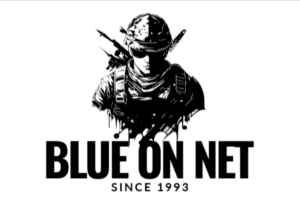Creating a Swimming Pool Construction Gresham in your backyard can transform your home into a personal retreat, a place for relaxation, exercise, and entertainment. For residents of Gresham, swimming pool construction offers an excellent opportunity to enhance outdoor living spaces while increasing property value. If you’re considering this investment, understanding the process, benefits, and local considerations involved in swimming pool construction in Gresham is essential for making informed decisions.
Swimming pool construction in Gresham begins with careful planning and design. Every successful project starts by assessing the available space, soil conditions, and your lifestyle needs. Gresham’s climate and terrain play a role in the choice of pool types, materials, and features. For instance, the moderate climate in Gresham allows for both in-ground and above-ground pools, but many homeowners prefer in-ground pools for their aesthetic appeal and long-term durability. When embarking on swimming pool construction in Gresham, collaborating with experienced designers and contractors ensures the pool meets both functional and visual expectations.
One of the significant advantages of swimming pool construction in Gresham is the variety of design options available. From traditional rectangular pools to freeform naturalistic designs, the flexibility is vast. Contractors in Gresham often incorporate custom features such as waterfalls, lighting, and heating systems to tailor the swimming pool to individual preferences. Additionally, swimming pool construction in Gresham can include eco-friendly choices, like energy-efficient pumps and solar heating, which align with growing environmental awareness among homeowners in the region. These options not only enhance enjoyment but also help manage operating costs over time.
Swimming pool construction in Gresham requires adherence to local regulations and permits to ensure safety and compliance. Gresham city ordinances often specify fencing requirements, water safety measures, and setback distances from property lines. Navigating these regulations is a critical part of swimming pool construction in Gresham, and professional builders are well-versed in securing the necessary permits. Failing to comply with these rules can result in fines or costly modifications, so it’s important to work with reputable contractors familiar with Gresham’s guidelines.
The choice of materials in swimming pool construction in Gresham greatly affects the pool’s longevity and maintenance. Common materials include concrete, fiberglass, and vinyl liners, each offering unique benefits. Concrete pools are highly customizable and durable but may require more maintenance, whereas fiberglass pools come pre-molded and offer a quicker installation process. Vinyl-lined pools are typically less expensive but may need periodic liner replacement. In Gresham, climate considerations often lead homeowners to select materials that withstand seasonal temperature variations and local weather patterns. Discussing these options with your pool builder is crucial during the swimming pool construction in Gresham to choose the best fit for your needs.
Budgeting is another critical aspect of swimming pool construction in Gresham. Costs can vary widely depending on the pool’s size, materials, additional features, and site conditions. Most homeowners find that setting a realistic budget early helps guide the construction process and avoid unexpected expenses. Swimming pool construction in Gresham may also include landscaping, decking, and outdoor lighting, all of which add to the total investment but also improve the overall appeal and usability of the pool area. Financing options and phased construction plans are sometimes available to accommodate different budgets, making swimming pool construction in Gresham more accessible.
After the swimming pool construction in Gresham is completed, proper maintenance becomes essential to preserve water quality and the pool’s structural integrity. Routine tasks include cleaning, chemical balancing, and equipment checks. Gresham’s climate means that pools may require seasonal opening and closing procedures to protect them during colder months. Professional pool service companies in Gresham can assist homeowners in maintaining their pools, ensuring that the investment lasts for many years. Additionally, proper maintenance is a key factor in swimming pool construction in Gresham that affects safety and enjoyment.
Safety is a top priority in swimming pool construction in Gresham. Besides following local codes, many homeowners install additional safety features such as pool covers, alarms, and non-slip surfaces. Educating family members and guests about pool safety is equally important. Many builders in Gresham recommend incorporating these elements during the swimming pool construction phase to avoid retrofitting costs later. Ultimately, safety measures provide peace of mind and allow everyone to enjoy the pool responsibly.
Swimming pool construction in Gresham is more than just building a structure; it is about creating a lifestyle upgrade. Whether you want a peaceful retreat, a fun play area for kids, or a venue for social gatherings, a well-designed swimming pool can meet these goals. Local contractors in Gresham bring expertise and knowledge of the region’s unique requirements to deliver pools that stand the test of time. With the right planning, design, and execution, swimming pool construction in Gresham becomes a worthwhile investment that enhances your quality of life and property value.
In conclusion, swimming pool construction in Gresham is a multifaceted process that combines design, compliance, materials, budgeting, and maintenance. Each step requires attention to detail and professional guidance to ensure a successful outcome. By choosing trusted local experts and understanding the specific considerations of Gresham’s environment and regulations, homeowners can enjoy the many benefits of having a swimming pool for years to come. Your dream pool in Gresham is within reach, and with careful planning, swimming pool construction can turn your vision into a refreshing reality.





